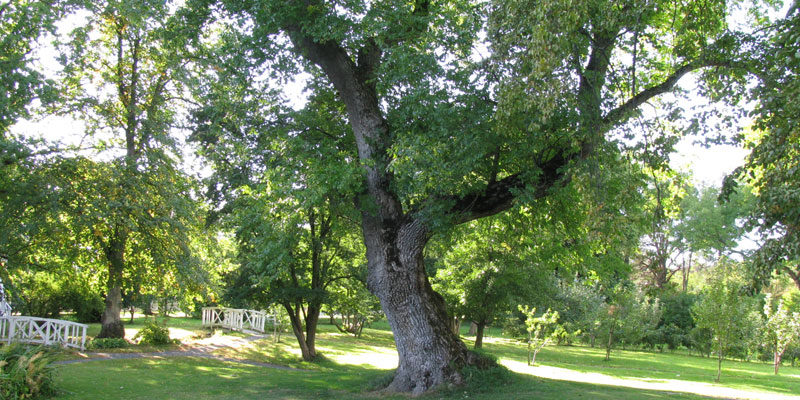Developing a genetic test to fight against ash dieback
-
Case study
- Environmental Sustainability and Resilience
Researchers at York led a pioneering study which opens up a new front in the battle against a disease affecting ash trees across Europe.

This is a wonderful example of British expertise in plant genomics and genetics rapidly and successfully being applied to minimise the impact of ash dieback. The technology developed offers a way around anticipated loss of more than 90 per cent of UK ash trees.
The issue
The European ash (Fraxinus excelsior) is being seriously affected by a chronic tree disease known as ash dieback. First recorded in Poland, the disease has led to huge losses across Europe. Only around two per cent of ash trees survive in areas where the disease is well established. In 2012 the disease was first discovered in the UK.
Ash trees provide shelter and food for over 1,000 species in Britain. Many plants and animals depend on ash for their survival. In addition to the 157,000 hectares of ash woodland in the UK, the 12 million ash trees outside those areas - in parklands, gardens, hedgerows and along roads - are also at risk.
Ash dieback is extremely difficult to eradicate. There is no known chemical treatment for the fungus causing the disease (Hymenoscyphus fraxineus). Its spores are carried by the wind for up to ten miles and can litter woodland floors for years.
The research
While many ash trees are highly susceptible to infection, small groups of trees have shown resistance to the disease, despite years of exposure.
York biologists have identified features of these tolerant trees that mark them out from susceptible varieties, giving hope that lost trees could be replaced.
Using a population of selected trees with diverse susceptibility, the researchers sequenced their RNA using a technique known as associative transcriptomics to identify genes whose sequence and expression levels are correlated with disease symptoms. This allowed the team to identify genetic markers that are connected to low susceptibility to ash dieback disease. Genetic markers are points of difference that can identify individual species and be used to correlate disease inheritance with a gene.
Many of the genes connected with resistance to ash dieback disease affect how trees function in other ways. In some plant species, the gene affects the timing of their flowering and bud burst. Some of the genes support plants in becoming increasingly resilient against pathogen attacks as they develop - a phenomenon known as age-related resistance.
The outcome
Identifying the genetic markers provides researchers with a test that can be implemented in the wild to identify trees that should be tolerant to ash dieback disease. These trees can then be used in future breeding programmes to try to repopulate ash in the UK.
The genes associated with resistance to ash dieback disease regulate the expression of other genes. The researchers are now working to establish how these changes in gene expression modify the physiology of the tree and exploring how this knowledge could help with management of ash dieback and other tree diseases.

Andrea Harper
Dr Harper's research focuses on developing statistical genetics approaches which are capable of associating trait variation with different types of genetic markers and flexible enough to be adapted to a range of plant species.

Ian Bancroft
Professor Bancroft is an expert in plant genomics who previously worked at the John Innes Centre in Norwich.
